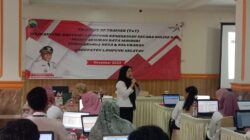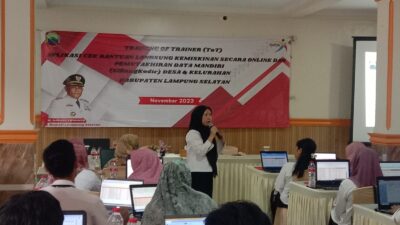Deep Learning and Natural Language Processing
Content
Text analytics from Clarabridge relies on our patentedNatural Language Processing technology to process text-based data in much the same way as the human brain processes language. Using proprietary algorithms it identifies the parts of speech, understands which words and ideas are linked, automatically corrects for mistakes, and derives meaning. It can comprehend the patterns and trends in a whole database, or drill down to understand a single tweet. With the ever-increasing volume of user-generated text (e.g., product reviews, doctor notes, chat logs), there is a need to distill valuable semantic information from such un-structured sources. We initially focus on product reviews, which conceptually consist of concepts such as “screen brightness”, and user opinions on these concepts such as “very positive”. Second, we argue and empirically show that the current style of soliciting customer opinion by asking them to write free-form text reviews is suboptimal, as few aspects receive most of the ratings.
This approach reads text sequentially and stores information relevant to the task. Named entity recognition concentrates on determining which items in a text (i.e. the “named entities”) can be located and classified into predefined categories. These categories can range from the names of persons, organizations and locations to monetary values and percentages. Basically, stemming is the process of reducing words to their word stem. A “stem” is the part of a word that remains after the removal of all affixes.
Part 9: Step by Step Guide to Master NLP – Semantic Analysis
Chinese language is the second most cited language, and the HowNet, a Chinese-English knowledge database, is the third most applied external source in semantics-concerned text mining studies. Looking at the languages addressed in the studies, we found that there is a lack of studies specific to languages other than English or Chinese. We also found an expressive use of WordNet as an external knowledge source, followed by Wikipedia, HowNet, Web pages, SentiWordNet, and other knowledge sources related to Medicine. The second most used source is Wikipedia , which covers a wide range of subjects and has the advantage of presenting the same concept in different languages. Wikipedia concepts, as well as their links and categories, are also useful for enriching text representation [74–77] or classifying documents [78–80].
We also found some studies that use SentiWordNet , which is a lexical resource for sentiment analysis and opinion mining . Among other external sources, we can find knowledge sources related to Medicine, like the UMLS Metathesaurus [95–98], MeSH thesaurus [99–102], and the Gene Ontology [103–105]. Schiessl and Bräscher and Cimiano et al. review the automatic construction of ontologies. Schiessl and Bräscher , the only identified review written in Portuguese, formally define the term ontology and discuss the automatic building of ontologies from texts.
How Rihanna and FENTY took celebrity entrepreneurship to a new level
This can help you stay on top of emerging trends and rapidly identify any PR crises or product issues before they escalate. The Stanford CoreNLP NLP toolkit also has a wide range of features including sentence detection, tokenization, stemming, and sentiment detection. This beginner’s guide from Towards Data Science covers using Python for sentiment analysis. Negation can also be solved by using a pre-trained transformer model and by carefully curating your training data. Pre-trained transformers have within them a representation of grammar that was obtained during pre-training. They are also well suited to parallelization, making them efficient for training using large volumes of data.
- In the example above words like ‘considerate” and “magnificent” would be classified as positive in sentiment.
- If we want computers to understand our natural language, we need to apply natural language processing.
- The system then combines these hit counts using a complex mathematical operation called a “log odds ratio”.
- The sentiment is mostly categorized into positive, negative and neutral categories.
Advanced, “beyond polarity” sentiment classification looks, for instance, at emotional states such as enjoyment, anger, disgust, sadness, fear, and surprise. Text semantics are frequently semantic analysis of text addressed in text mining studies, since it has an important influence in text meaning. However, there is a lack of secondary studies that consolidate these researches.
Curating your data is done by ensuring that you have a sufficient number of well-varied, accurately labelled training examples of negation in your training dataset. Consider the example, “I wish I had discovered this sooner.” However, you’ll need to semantic analysis of text be careful with this one as it can also be used to express a deficiency or problem. For example, a customer might say, “I wish the platform would update faster! Another approach is to filter out any irrelevant details in the preprocessing stage.
However, classifying a document level suffers less accuracy, as an article may have diverse types of expressions involved. Researching evidence suggests a set of news articles that are expected to dominate by the objective expression, whereas the results show that it consisted of over 40% of subjective expression. Classification may vary based on the subjectiveness or objectiveness of previous and following sentences. The automated customer support software should differentiate between such problems as delivery questions and payment issues. In some cases, an AI-powered chatbot may redirect the customer to a support team member to resolve the issue faster.
Building Blocks of Semantic System
Besides, we can find some studies that do not use any linguistic resource and thus are language independent, as in [57–61]. These facts can justify that English was mentioned in only 45.0% of the considered studies. Leser and Hakenberg presents a survey of biomedical named entity recognition. The authors present the difficulties of both identifying entities and evaluating named entity recognition systems.
When a customer likes their bed so much, the sentiment score should reflect that intensity. This article will explain how basic sentiment analysis works, evaluate the advantages and drawbacks of rules-based sentiment analysis, and outline the role of machine learning in sentiment analysis. Finally, we’ll explore the top applications of sentiment analysis before concluding with some helpful resources for further learning. Deep learning algorithms were inspired by the structure and function of the human brain. This approach led to an increase in the accuracy and efficiency of sentiment analysis. In deep learning the neural network can learn to correct itself when it makes an error.
Note that .concordance() already ignores case, allowing you to see the context of all case variants of a word in order of appearance. Note also that this function doesn’t show you the location of each word in the text. Now you have a more accurate representation of word usage regardless of case. These return values indicate the number of times each word occurs exactly as given. Since all words in the stopwords list are lowercase, and those in the original list may not be, you use str.lower() to account for any discrepancies.
- Luckily there are many online resources to help you as well as automated SaaS sentiment analysis solutions.
- A common way to do this is to use the bag of words or bag-of-ngrams methods.
- However, it is possible to conduct it in a controlled and well-defined way through a systematic process.
- Thematic analysis is the process of discovering repeating themes in text.
- A theme captures what this text is about regardless of which words and phrases express it.
This could include everything from customer reviews to employee surveys and social media posts. The sentiment data from these sources can be used to inform key business decisions. Companies use Machine Learning based solutions to apply aspect-based sentiment analysis across their social media, review sites, online communities and internal customer communication channels. The results of the ABSA can then be explored in data visualizations to identify areas for improvement. These visualizations could include overall sentiment, sentiment over time, and sentiment by rating for a particular dataset.
Or you might choose to build your own solution using open source tools. Without knowing what the product is being compared to, it’s hard to know if these are positive, negative or neutral. If the person considers the other products they’ve used to be very poor, this sentence could be less positive than it seems at face value.











